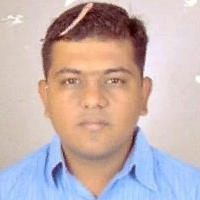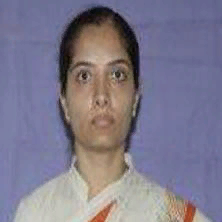International Journal of Image, Graphics and Signal Processing (IJIGSP)
IJIGSP Vol. 7, No. 1, 8 Dec. 2014
Cover page and Table of Contents: PDF (size: 633KB)
Compressive Sensing Based Multiple Watermarking Technique for Biometric Template Protection
Full Text (PDF, 633KB), PP.53-60
Views: 0 Downloads: 0
Author(s)
Index Terms
Compressive Sensing, Discrete Wavelet Transform (DWT), Fingerprint, Face, Iris, Multimodalities, Sparsity, Watermarking
Abstract
Biometric authentication system is having several security issues. Two security issues are template protection at system database and at communication channel between system database and matcher subsystem of biometric system. In this paper, two level watermarking technique based on CS Theory framework in wavelet domain is proposed for security and authentication of biometric template at these two vulnerable points. In the proposed technique, generate sparse measurement information of fingerprint and iris biometric template using CS theory framework. This sparse measurement information is used as secure watermark information which is embedding into a face image of same individual for generation of multimodal biometric template. Sparse watermark information is computed using Discrete Wavelet transform (DWT) and random seed. The proposed watermarking technique not only provide protection to biometric templates, it also gives computational security against spoofing attack because of it is difficult for imposter to get three secure biometric template information where two encoded biometric template is embed in term of sparse measurement information into third biometric template. Similarity value between original watermark image and reconstructed watermark image is the measuring factor for identification and authentication. The experimental results show that the technique is robust against various attacks.
Cite This Paper
Rohit M. Thanki, Komal R. Borisagar,"Compressive Sensing Based Multiple Watermarking Technique for Biometric Template Protection", IJIGSP, vol.7, no.1, pp.53-60, 2015. DOI: 10.5815/ijigsp.2015.01.07
Reference
[1]A. Jain and A. Kumar, "Biometric Recognition: An Overview, Second Generation Biometrics: The Ethical, Legal and Social Context", E. Mordini and D. Tzovaras (Eds.), Springer, 2012, pp. 49-79.
[2]A. Jain and K. Nandakumar, "Biometric Authentication: System Security and User Privacy", IEEE Computer Society, November 2012.
[3]A. Jain, A. Ross and S. Pankanti, "Biometrics: A Tool for Information Security", IEEE Transactions on Information Forensics and Security, vol. 1, no. 2, June 2006, pp. 125-143.
[4]N. Ratha, J. Connell and R. Bolle, "Enhancing Security and Privacy in Biometric Based Authentication Systems", IBM Systems Journal, vol. 40, no. 3, 2001.
[5]N. Ratha, J. Connell and R. Bolle, "An Analysis of Minutiae Matching Strength", in Proceedings International Conference Audio and Video-based Biometric Person Authentication, Halmstad, Sweden, June 2001, pp. 223-228.
[6]A. Jain, A. Ross and S. Pankanti, "An Introduction to Biometric Recognition", IEEE Transactions on Circuits and Systems for Video Technology, vol. 14, no. 1, January 2004, pp. 4-20.
[7]V. Inamdar, P. Rege and M. Arya, "Offline Handwritten Signature based Blind Biometric Watermarking and Authentication Technique using Biorthogonal Wavelet Transform", International Journal of Computer Applications, volume 11, no. 1, December 2010, pp. 19-27.
[8]V. Jundale and S. Patil, "Biometric Speech Watermarking Technique in Images Using Wavelet Transform", IOSR Journal of Electronics and Communication Engineering (IOSR-JECE), February 2010, pp. 33-39.
[9]D. Mathivadhani and C. Meena, "A Comparative Study of Fingerprint Protection using Watermarking Techniques", Global Journal of Computer Science and Technology, volume 9, issue 5, January 2010.
[10]M. Vatsa, R. Singh and A. Noore, "Feature Based RDWT Watermarking for Multimodal Biometric System", Elsevier Science, June 2007.
[11]M. Vasta, R. Singh and A. Noore, M. Houck and K. Morris, "Robust Biometric Image Watermarking for Fingerprint and Face Template Protection", IEICE Electronics Express, vol. 3, no. 2, January 2006, pp. 23-28.
[12]M. Vasta, R. Singh and A. Noore, "Improving Biometric Recognition Accuracy and Robustness Using DWT and SVM Watermarking", IEICE Electronics Express, vol. 1, no. 12, June 2005, pp. 362-367.
[13]A. Giannoula and D. Hatzinakos, "Data Hiding for Multimodal Biometric Recognition", In Proceedings of the 2004 IEEE International Symposium on Circuits and Systems, volume 2, 2004, pp. 160-165.
[14]F. Tiesheng, L. Guiqiang, D. Chunyi and W. Danhua, "A Digital Image Watermarking Method Based on the Theory of Compressed Sensing", International Journal Automation and Control Engineering, volume 2, Issue 2, May 2013.
[15]A. Sreedhanya and K. Soman, "Ensuring Security to the Compressed Sensing Data Using a Steganographic Approach", Bonfring International Journal of Advances in Image Processing, vol. 3, no. 1, March 2013, pp. 1-7.
[16]M. Fakhr, "Robust Watermarking Using Compressed Sensing Framework with Application to MP3 Audio", The International Journal of Multimedia & Its Applications (IJMA), volume 4, no. 6, December 2012.
[17]M. Raval, M. Joshi, P. Rege and S. Parulkar, "Image Tampering Detection Using Compressive Sensing Based Watermarking Scheme", In Proceedings of MVIP 2011, December 2011.
[18]M. Sheikh and R. Baraniuk, "Blind Error Free Detection of Transform Domain Watermarks", in Proceedings of IEEE International Conference on Image Processing, San Antonio, Texas, United States, September 2007.
[19]D. Donoho, "Compressed Sensing", IEEE Transaction on Information Theory, vol. 52, no. 4, April 2006, pp. 1289-1306.
[20]E. Candès, "Compressive Sampling", in Proceedings of the International Congress of Mathematicians, Madrid, Spain 2006.
[21]R. Baraniuk, Lecture notes "Compressive Sensing", IEEE Signal Processing Magazine, Vol. 24, July 2007, pp. 118-124.
[22]E. Candès and J. Romberg, "L1-Magic: Recovery of Sparse Signals via Convex Programming", October 2005.
[23]J. Tropp and A. Gilbert, "Signal Recovery from Random Measurements via Orthogonal Matching Pursuit", IEEE Transactions on Information Theory, vol. 53, no. 12, December 2007, pp. 4655-4666.
[24]W. Dai and O. Milenkovic, "Subspace Pursuit for Compressive Sensing Signal Reconstruction", 2009.
[25]Vidit Jain, Amitabha Mukherjee, "The Indian Face Database", 2002. http://vis-www.cs.umass.edu/~vidit/IndiaFaceDatabase.
[26]For Fingerprint Database: http://bias.csr.unibo.it/fvc2004/databases.asp.
[27]For iris Database: http://www.sinobiometrics.com/caisairis.html.
[28]H. Tsai and C. Liu, "Wavelet Based Image Watermarking with Visibility Range Estimation Based on HVS and Neural Networks", Pattern Recognition, 44(2011), pp. 751-763.
[29]Z. Wang and A. Bovik, "A Universal Image Quality Index", J. IEEE Signal Processing Letters, 9(3), 2004, pp. 84-88.
[30]B. Behera and V. Govindan, "Improved Multimodal Biometric Watermarking in Authentication Systems Based on DCT and Phase Congruency Model", International Journal of Computer Science and Network, vol. 2, issue 3, pp. 123-129, June 2013.
[31]E. Candès, "The Restricted Isometry Property and Its Implications for Compressed Sensing", Comptes rendus de l'Acad'emie des Sciences Serie I, vol. 346, no. 9 -10, pp. 589 – 592, May 2008.
[32]J. Laska, M. Davenport and R. Baraniuk, "Exact Signal Recovery from Sparsely Corrupted Measurements through the Pursuit of Justice", Signals, Systems and Computers, 2009 Conference Record of the Forty-Third Asilomar Conference on , IEEE, 2009, pp. 1556-1560.

